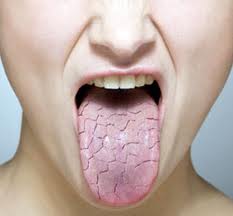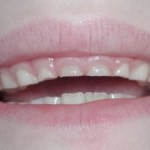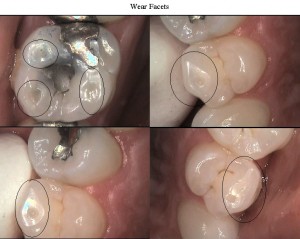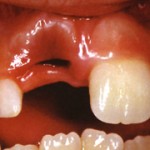Dental splinting is the joining of two or more teeth into a rigid unit by means of fixed or removable restorations/devices. A periodontal splint is an appliance used for maintaining or stabilizing mobile teeth in their functional position. The main objective of splinting is to promote healing and to increase the patients comfort and function.
Monthly Archives: October 2011
Dry mouth reasons and remedies
Saliva has many different functions; to name a few, digestion, lubrication, to help you taste food, to protect your teeth from tooth decay, helping you swallow food, and protection your mouth from infection. It is produced by the many salivary glands in out mouth. There are 3 pairs of major salivary glands (the parotid glands, the submandibular glands and the sublingual glands, one of each on each side of the face) and over 600 minor salivary glands. These glands are connected by a duct and open into the mouth via small orifices. Sometimes we take saliva for granted such that we don’t realize how important it is until we’ve lost it. A normal person produces 4-6 cups of saliva daily. If the production decreases, he or she will have symptoms of “dry mouthâ€, or “xerostomiaâ€, resulting in a great discomfort and inconvenience. It is a common phenomenon especially among middle aged and elderly women.
Continue reading
Top 5 Children Habits You Need to Know About (Part 2)
4. Bruxism
It is a habitual grinding of teeth when the child is not chewing or swallowing. It is divided into Daytime Bruxism (Diurnal) or Night -time Bruxism (Nocturnal). Daytime Bruxism can be conscious or subsconscious grinding along with parafunctional habits and it is usually silent. On the other hand, Night-time Bruxism is categorized as subconscious grinding in a rhythmic pattern. Bruxism happens as a result of faulty fillings, improper teeth occlusion, genetic causes, neurological disturbances, occupational factors, over anxious or stressed children.
Â
What do you notice?
From the tooth surfaces, you will observe your child’s teeth are very much worn off. This feature is called atypical wear facet, whereby the worn area are shiny, uneven with sharp edges on the upper and lower front teeth. Fillings may fracture or tooth may chip off as a result of grinding. Teeth will become mobile and very sensitive to cold and hot food. Besides that, your child may complain of muscular tenderness and fatigue around the cheek on rising in the morning. Jaw movements restricted and difficult in opening mouth for a long time.
   Â
Continue reading
How to Repair Lumineers
Lumineers are a new development in the dental industry that provide a topical application of a veneer that is made specifically for you. Lumineers by Cerinate®, are Den-Mat’s alternative to traditional porcelain veneers. As opposed to the traditional veneer that requires injections and lengthy procedures, the Lumineer design does not need any of this. The Lumineer application is completely reversible, as well, to provide the peace of mind in knowing you can adjust the Lumineers or repair them if any damage occurs. Continue reading
What to do when your teeth comes out from the socket? (Avulsion)
Avulsion is defined as the complete displacement of the tooth out of the socket. It means that the teeth has come out from the socket entirely. Losing a tooth can be physically and emotionally demanding as a result it is difficult to fill and replace. As early as 400 BCE, Hippocrates suggested that teeth should be replaced and fixed firmly to adjacent teeth with wire. Modern techniques nowadays focus on reimplanting the tooth as soon as possible, minimizing periodontal damage and preventing infection of the pulp tissue.
Continue reading
Top 5 Children Habits You Need to Know About (Part 1)
Oral habits in children are a major concern for the dentists and parents. A baby’s mouth acts as a primary device for exploring the environment and his or her lips and tongues are stimulated by instinctive sucking. By random movements, babies discover their hands and toes and use these to continue the stimulation of their mouth and related structures. Normal habits grow out of these in the early developmental stages. However, some babies do not. They continued to retain these habits until they are toddlers and it created further dental problems.
Dental Office Emergency Supply Requirements
In the case of a medical emergency in the dental office, it is essential that all members of the dental team are competent in basic life support while waiting for emergency crews to arrive. An emergency supply kit of drugs must be available in every dental office and should contain only a limited number of drugs with which the dental practitioner is familiar. Inappropriate use could worsen the patient’s condition. A medical emergency kit could be useful in a patient, staff or visitor medical crisis; or following a natural or man-made disaster. Continue reading
Implants Vs. Dental Crowns
When an artificial tooth is needed, whether because you have lost your teeth or when your teeth is badly broken down, there are several choices that you can opt for, i.e. crowns, bridges, dentures or implants. In this article we will be weighing the pros and cons of implants and tooth crowns. Continue reading
What to do when your child knocks his tooth out?
Before I explain to you regarding the emergency measures that you should perform when your child knocks his tooth out, let me briefly discuss about what will happen to a tooth after it is completely displaced out of socket. Success of a replantation depends on the amount of time the tooth is out of socket and storage medium used to store the avulsed tooth. Avulsion is complete displacement of tooth out of socket. Continue reading
How to Quickly Stop Bleeding from Tooth Extraction
After one or more teeth have been removed, you will want to do all the right things for the area to heal quickly and smoothly. This requires that a blood clot is formed. The blood clot covers the extraction site and allows the area to heal. A lot of the tips below help the blood clot to form properly and not become dislodged. Continue reading





